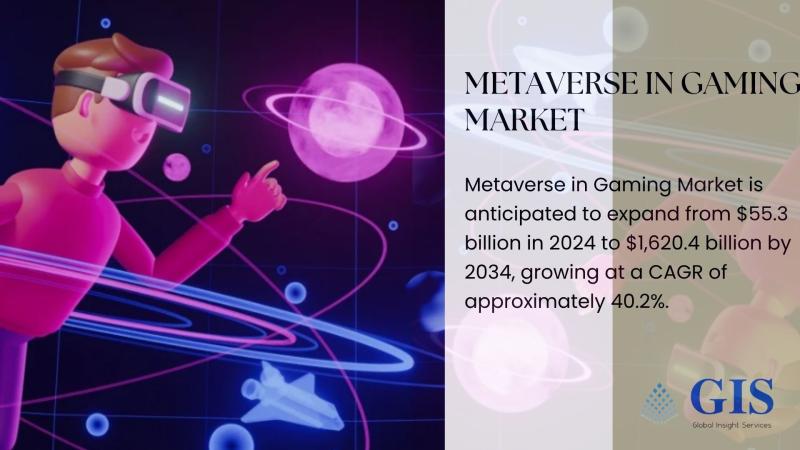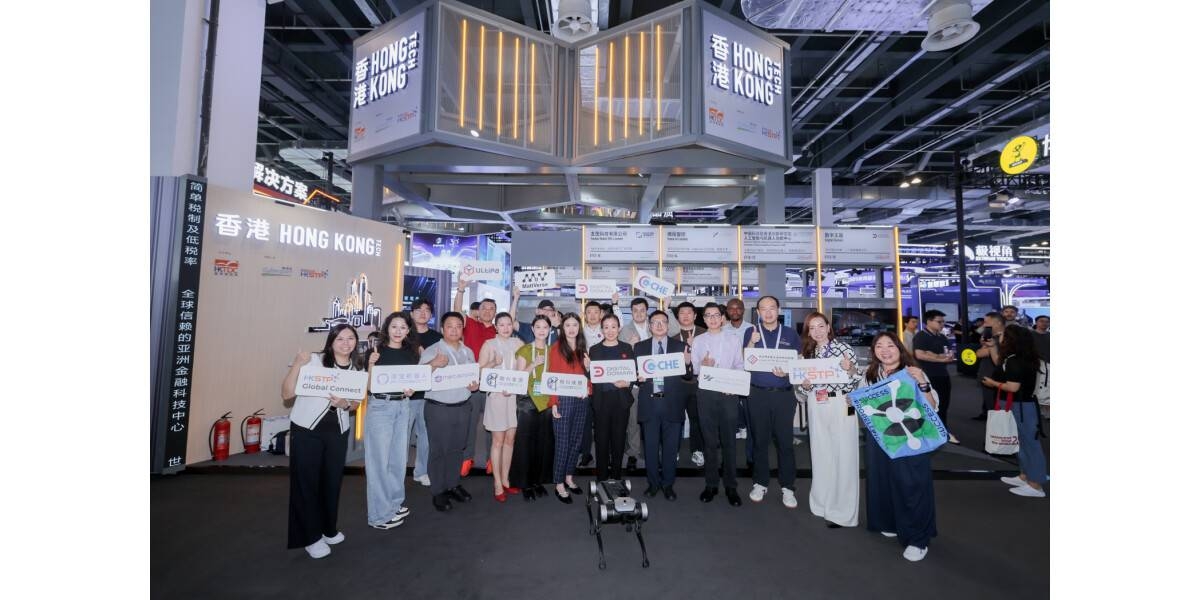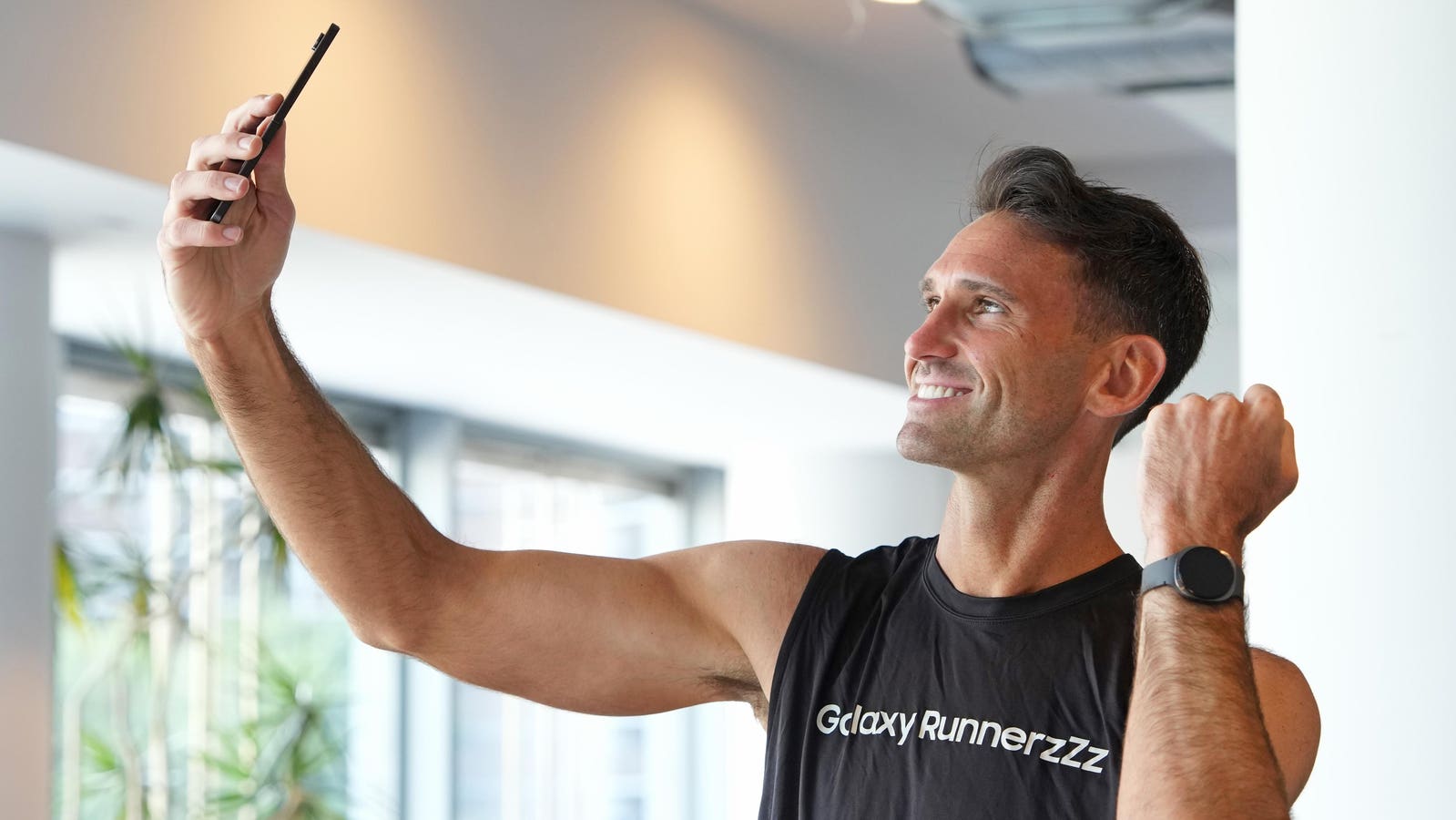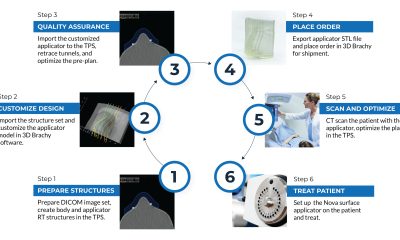Technology
Why AI Labs Are Starting to Look Like Sports Teams
I wrote extensively about AI last summer, starting with AI’s $600B Question, The Game Theory of AI CapEx, AI is Shovel Ready, Steel, Servers & Power, and ending with AI’s Supply Chain Tug of War. Reflecting one year later, it’s interesting how little has changed: AI’s $600B Question is now roughly AI’s $840B Question, assuming […]

I wrote extensively about AI last summer, starting with AI’s $600B Question, The Game Theory of AI CapEx, AI is Shovel Ready, Steel, Servers & Power, and ending with AI’s Supply Chain Tug of War.
Reflecting one year later, it’s interesting how little has changed: AI’s $600B Question is now roughly AI’s $840B Question, assuming that Nvidia reaches something like $210B in run-rate data center revenue by year-end 2025. OpenAI remains the lion’s share of AI’s overall revenue, crossing $10B recently, according to Reuters. The total revenue in the AI ecosystem still pales in comparison to the dollars that have been put into the ground — if anything, my estimates last year around how much revenue the Big Tech companies were making on AI were probably too high.
There have been three major improvements in AI over the last year: First, coding AI has really taken off. A year ago, the demos for these products were mind-blowing, and today, the coding AI space is generating something like $3B in run-rate revenue. The second change is that reasoning has found product-market fit, and the AI ecosystem has gotten excited about a second scaling law, around inference-time compute. By repeatedly querying these models and by using reinforcement learning, we can get better, more robust results. And finally, there seems to be a “smile curve” around ChatGPT usage, where this new behavior is really getting ingrained into day-to-day life.
The app layer ecosystem for AI has continued to improve, leveraging cheap compute and integrated workflows to build durable businesses. More abundant compute has been good for the startup ecosystem, and companies like Harvey, Sierra, Abridge, SmarterDx, Perplexity, OpenEvidence, Clay, Sesame and many others have made great strides around packaging this capability for their customers. Our ambition one year ago was to back as many of these companies as possible, and that continues to be our ambition today.
There is one dynamic, however, that has really changed since last year. A year ago, everyone was talking about cluster size and pre-training scaling, and now that seems to have quietly disappeared from the public dialogue. Perhaps this is because new clusters are taking longer to get online, or because as Ilya Sutskever said in December, “Pre-training as we know it will end.” By the same token, one year ago we were seeing a consolidation in research labs because of the daunting costs of building a foundation model lab. Microsoft/OpenAI, Amazon/Anthropic, Google, Meta and xAI emerged as five “finalists” in the AI race as others folded, because these companies had reached GPT-4 level models and had sufficient capital to continue scaling. Now, by contrast, a new cohort of players has sprouted up, including SSI, Thinking Machines, and DeepSeek, who claim talent, not raw compute scale, as their primary differentiators.
Whereas one year ago the narrative was around pre-training compute requirements driving consolidation, today the narrative is all about talent advantages being critical in a world of increasing compute abundance. This is especially true for Google and Meta. Google is under siege from a product positioning perspective and is doing everything in their power to reverse this dynamic. Meta’s bold decision to acquire a 49% stake in Scale and bring in CEO Alex Wang to lead their new “founder mode” AI lab is an even more clear move in this direction. For both companies — and for the ecosystem at large — the message of 2025 is that large-scale clusters alone are insufficient. Everyone understands that new breakthroughs will be required to jump to the next level in the AI race — whether in reinforcement learning or elsewhere — and talent is the unlock to finding them.
With their obsessive focus on talent, the AI labs are increasingly looking like sports teams: They are each backed by a mega-rich tech company or individual. Star players can command pay packages in the tens of millions, hundreds of millions, or for the most outlier talent, seemingly even billions of dollars. Unlike sports teams where players often have long-term contracts, AI employment agreements are short-term and liquid, which means anyone can be poached at any time. One irony of this is that while the notion of AI race dynamics was originally popularized by the AI safety community as a boogeyman to avoid, this is exactly what has been wrought across two distinct domains: First compute and now talent.
I think this is a function of human nature. When have humans ever seen something wonderful, and then said, “Now we have enough, it’s time to cool off?” It is an intrinsic property of humanity that once critical thresholds are passed, we take things all the way to the extreme. We cannot hold ourselves back. And when the prize is as big as the perceived AI prize is, then any bottleneck that gets in the way of success — especially an illiquid bottleneck like talent — will be pushed to staggering levels.
And yet, even amidst this fierce competition, the broader AI ecosystem also feels calmer today than at any point in the last three years. That’s because for most people, the race itself is now a constant and the market structure feels stable. People are getting comfortable with the status quo. The unstable competitive equilibrium is itself stable — for now.
Technology
Tata Consultancy Stocks Dive After 12,000 Job Cut Announcement
The stock price of Tata Consultancy Services (TCS) fell by almost 2 percent, following the announcement of recent job cuts affecting 12,261 employees. This reduction in workforce is part of the company’s plan to decrease its employee count by 12,261 people in the current financial year 2026. When a company announces job cuts, investors often […]

The stock price of Tata Consultancy Services (TCS) fell by almost 2 percent, following the announcement of recent job cuts affecting 12,261 employees.
This reduction in workforce is part of the company’s plan to decrease its employee count by 12,261 people in the current financial year 2026.
When a company announces job cuts, investors often become concerned about its future, which can lead them to sell shares and cause a price drop. These job cuts primarily impact middle and senior managers.
ALSO READ: TCS Layoffs: India’s Top IT Firm To Cut 12,000 Jobs In 2025; CEO Cites Move To AI-Driven Operations
The company intends to reduce staff mainly in roles such as middle and senior management. Junior or entry-level staff are not as significantly affected.
The Nifty IT Index, which tracks technology companies, also declined by over 1 percent.
Given TCS’s significant market presence, its stock decline also led to a fall in the stocks of other companies, contributing to an overall drop of more than 1 percent for the IT sector.
TCS shares have been performing poorly, down 10 percent in one month and over 30 percent in one year. This indicates a consistent downward trend in its market value.
ALSO READ: Big Financial Changes From August 1: From New Limits In UPI To Revision In LPG Price | All You Need To Know
The company states that the job cuts are being implemented to make the organization more “future-ready” and with a greater focus on AI.
TCS also clarified that the job cuts were due to a skills mismatch among employees, not because fewer people were needed overall. Despite facing criticism for this move, TCS still plans to hire and train only skilled individuals.
Before these job cuts, TCS introduced a new policy requiring employees to work at least 225 days a year on projects and limit their “on the bench time” (time without a proper project) to less than 35 days annually. This policy aims to ensure employees remain productive and consistently engaged in work.
More and more employees are leaving TCS, as the attrition rate has risen to 13.8 percent. A high attrition rate can be a concern for the company, as it leads to the loss of experienced talent.
ALSO READ: Big Financial Changes From August 1: From New Limits In UPI To Revision In LPG Price | All You Need To Know
TCS reported a profit increase of 4.38 percent in the last quarter. Although their revenue decreased slightly, they managed to be more efficient with their money, leading to increased profitability despite earning a little less overall.
TCS also declared an interim dividend of Rs 11 per share for its shareholders, coinciding with its rising profits.
Technology
Metaverse in Gaming Market to Soar to $1,620.4 Billion by 2034,
Metaverse in Gaming Market Market Overview Metaverse in Gaming Market represents a revolutionary shift in how we interact with digital entertainment. Fueled by immersive technologies like virtual reality (VR), augmented reality (AR), and blockchain, this market has evolved into a multi-dimensional, interactive ecosystem where players are more than just users-they’re active participants in a digital […]


Metaverse in Gaming Market
Market Overview
Metaverse in Gaming Market represents a revolutionary shift in how we interact with digital entertainment. Fueled by immersive technologies like virtual reality (VR), augmented reality (AR), and blockchain, this market has evolved into a multi-dimensional, interactive ecosystem where players are more than just users-they’re active participants in a digital universe. Whether through social gaming or role-playing adventures, gamers are now engaging in virtual worlds that blend reality and fantasy, creating a vibrant, ever-evolving digital economy.
Click to Request a Sample of this Report for Additional Market Insights: https://www.globalinsightservices.com/request-sample/?id=GIS25181
Market Size, Share & Demand Analysis
The Metaverse in Gaming Market is projected to skyrocket from $55.3 billion in 2024 to a staggering $1,620.4 billion by 2034, growing at a blistering CAGR of 40.2%. As of 2024, there are over 300 million active users, with this figure expected to surpass 500 million by 2028. Virtual reality gaming currently holds the lion’s share at 45%, followed by AR at 30% and mixed reality at 25%. The increasing demand for deeper, personalized gaming experiences is driving this exponential growth, supported by the mass adoption of high-end gaming hardware and cloud-based infrastructure.
Market Dynamics
Several powerful forces are at play in shaping the Metaverse in Gaming Market. Technological innovation remains the primary driver-VR headsets, haptic devices, and AR glasses are making gaming intensely immersive. Blockchain is decentralizing game economies, enabling players to own, trade, and monetize digital assets through NFTs. Another major factor is the social component of metaverse games. As users seek connection and community, social gaming environments offer spaces to collaborate, compete, and create user-generated content.
However, the market is not without challenges. High development costs, data privacy concerns, and environmental impact due to energy-intensive infrastructure pose barriers. Regulatory uncertainty across regions also complicates expansion. Nonetheless, the rewards for overcoming these challenges are vast, making this one of the most enticing sectors in the tech world.
Key Players Analysis
The Metaverse in Gaming Market is populated by both tech giants and innovative startups. Key players like Meta Platforms, Inc., Epic Games, and Roblox Corporation are leading with unique strategies. Meta emphasizes social integration within its VR platforms. Epic Games leverages its cross-platform gaming capabilities, particularly through Fortnite, to engage a massive user base. Roblox, on the other hand, thrives on user-generated content and community engagement.
Emerging players such as Dreamscape Interactive, Holo Craft Studios, and Voxel Ventures are also gaining ground by pushing creative boundaries. These companies focus on niche aspects like interactive storytelling, education in virtual worlds, and gamified social platforms, carving out specialized spaces in the broader ecosystem.
Browse Full Report : https://www.globalinsightservices.com/reports/metaverse-in-gaming-market/
Regional Analysis
Geographically, North America dominates the Metaverse in Gaming Market, particularly the United States, which benefits from a strong tech base and high gamer spending. Europe trails closely behind, with countries like Germany and the UK embracing immersive gaming experiences.
Asia-Pacific, however, is emerging as the most dynamic region, thanks to the widespread use of smartphones, a booming esports culture, and heavy investments in tech infrastructure. Nations like China, Japan, and South Korea are major contributors to this surge. Meanwhile, Latin America and the Middle East are catching up quickly, supported by improved internet access and rising digital literacy.
Recent News & Developments
Recent developments in the Metaverse in Gaming Market point to increased investment and rapid innovation. Major tech firms are doubling down on VR and AR advancements, while blockchain integration continues to gain traction. The inclusion of NFTs has transformed digital asset ownership, leading to new monetization models. Additionally, the rise of esports within metaverse environments is reshaping competitive gaming, encouraging collaboration between platforms and content creators.
Subscription services, in-game purchases, and cloud gaming are also evolving, offering more flexibility and accessibility. As regulations around data ownership and privacy emerge, they are likely to influence future pricing strategies and user engagement models.
Scope of the Report
The scope of this report on the Metaverse in Gaming Market encompasses a comprehensive analysis of market segments such as hardware, software, applications, services, and deployment models. It delves into consumer behavior, competitive strategies, regulatory landscapes, and import-export dynamics. Our insights are backed by data from top research institutions, tech councils, and global economic bodies.
By exploring key market trends, challenges, and opportunities, this report empowers stakeholders to make informed decisions in one of the fastest-growing digital industries. Whether you’re a developer, investor, or gamer, the Metaverse in Gaming Market promises a frontier of endless possibilities and boundless creativity.
Discover Additional Market Insights from Global Insight Services:
Enterprise Risk Management Market : https://www.globalinsightservices.com/reports/enterprise-risk-management-market/
ESG Risk Management Market ; https://www.globalinsightservices.com/reports/esg-risk-management-market/
Financial Risk Management Software Market : https://www.globalinsightservices.com/reports/financial-risk-management-software-market/
Online Travel Agencies Market : https://www.globalinsightservices.com/reports/online-travel-agencies-market/
Smart Ports Market : https://www.globalinsightservices.com/reports/smart-ports-market/
Contact Us :
Global Insight Services LLC
16192, Coastal Highway, Lewes DE 15998
E-mail: info@globalinsightservices.com
Phone: +1-833-761-1700
Website: https://www.globalinsightservices.com/
About Us :
Global Insight Services (GIS) is a leading multi-industry market research firm headquartered in Delaware, US. We are committed to providing our clients with highest quality data, analysis, and tools to meet all their market research needs. With GIS, you can be assured of the quality of the deliverables, robust & transparent research methodology, and superior service.
This release was published on openPR.
Technology
2025-2034 Generative Artificial Intelligence (AI) in Sports
Generative Artificial Intelligence (AI) in Sports Market Use code ONLINE30 to get 30% off on global market reports and stay ahead of tariff changes, macro trends, and global economic shifts. What Is the Expected CAGR for the Generative Artificial Intelligence (AI) in Sports Market Through 2025? The market size for generative artificial intelligence (AI) in […]


Generative Artificial Intelligence (AI) in Sports Market
Use code ONLINE30 to get 30% off on global market reports and stay ahead of tariff changes, macro trends, and global economic shifts.
What Is the Expected CAGR for the Generative Artificial Intelligence (AI) in Sports Market Through 2025?
The market size for generative artificial intelligence (AI) in sports has experienced rapid expansion in the past few years. There is expected growth from $0.22 billion in 2024 to $0.28 billion in 2025, with a compound annual growth rate (CAGR) pegged at 30.5%. Factors such as expansion of data centers, increased use of cloud gaming services, advancements in autonomous vehicles and ADAS, growth of edge computing and IoT, and the rise of blockchain and cryptocurrency have all contributed to this historic growth.
What’s the Projected Size of the Global Generative Artificial Intelligence (AI) in Sports Market by 2029?
The market size of generative artificial intelligence (AI) in sports is projected to experience a huge growth spurt in the upcoming years, reaching $0.73 billion in 2029 with a compound annual growth rate (CAGR) of 26.6%. This surge during the forecasted period can be credited to advancements in computer vision, tailored training programs, real-time decision support, enhanced fan experiences, and international sports events. The forthcoming period is expected to witness trends such as merging with emerging technologies, advancements in wearable technology, opportunistic sponsorship and revenue, injury prevention and rehabilitation, and integration of wearable technology.
View the full report here:
https://www.thebusinessresearchcompany.com/report/generative-artificial-intelligence-ai-in-sports-global-market-report
Top Growth Drivers in the Generative Artificial Intelligence (AI) in Sports Industry: What’s Accelerating the Market?
The surge in sports-related injuries is anticipated to invigorate the generative artificial intelligence (AI) adoption within the sports industry. In the context of sport, injury refers to any harm inflicted during physical endeavor or field activities. In the pursuit of mitigating such incidents, generative AI aids in fabricating lifelike practice scenarios which assist athletes to hone their skills and discern potential risk factors in a protected, managed setting. For instance, in 2023, the National Safety Council, an American non-profit entity championing wellness and safe practices, substantiated that the count of injuries associated with sports and recreation activities saw an 11% upsurge from 3,231,885 in 2021 to 3,631,970 in 2022. Consequently, the escalation in the occurrence of sports injuries is lending impetus to the growth of generative AI within the sports industry.
Get your free sample here:
https://www.thebusinessresearchcompany.com/sample.aspx?id=13665&type=smp
What Trends Will Shape the Generative Artificial Intelligence (AI) in Sports Market Through 2029 and Beyond?
Leading firms in the generative artificial intelligence (AI) sports industry are strategizing collaborations to create and deliver digital products and services for a competitive advantage in the market. These collaborations are typically either formal or informal agreements between multiple parties to achieve a common goal while preserving their respective autonomy. For instance, Globant, an American company specializing in software development, partnered with LaLiga Tech, a company hailing from Spain that offers digital solutions for sports and entertainment, alongside Microsoft in August 2023. This collaboration aims to merge sports industry knowledge with IT expertise, capitalizing on emerging technologies such as AI and blockchain. Their joint venture’s goal is to augment the existing sports data and enrich the fan experience for millions around the globe. Microsoft, a major US technology corporation, provides generative AI platforms for diverse industries.
What Are the Main Segments in the Generative Artificial Intelligence (AI) in Sports Market?
The generative artificial intelligence (AI) in sports market covered in this report is segmented –
1) By Sports Type: Football, Tennis, Cricket, Basketball, Hockey, Golf, Other Sports
2) By Deployment: On-Premises, Cloud-Based
3) By Application: Performance Analysis, Game Strategies, Sports Equipment Design, Other Applications
Subsegments:
1) By Football: Player Performance Analysis, Match Strategy Optimization
2) By Tennis: Player Training Simulations, Match Prediction Models
3) By Cricket: Game Analysis Tools, Player Statistics And Insights
4) By Basketball: Shot Selection Analysis, Injury Prediction Models
5) By Hockey: Player Performance Tracking, Game Strategy Development
6) By Golf: Swing Analysis Tools, Course Management Simulations
7) By Other Sports: Multi-Sport Analytics Platforms, Custom Ai Applications For Niche Sports
Tailor your insights and customize the full report here:
https://www.thebusinessresearchcompany.com/customise?id=13665&type=smp
Which Top Companies are Driving Growth in the Generative Artificial Intelligence (AI) in Sports Market?
Major companies operating in the generative artificial intelligence (AI) in sports market report are Google LLC, Amazon Web Services (AWS), Intel Corporation, International Business Machines Corporation, NVIDIA Corporation, Baidu Inc., Zebra Technologies Corporation, Stats Perform Group LLC, Tempus Ex, GumGum Inc., Noah Basketball LLC, Catapult Sports, Genius Sports, PlaySight Interactive Ltd., ChyronHego Corporation, Whistle Sports Inc., Sportlogiq Inc., SportsMEDIA Technology, Hawk-Eye Innovations Ltd., Opendorse, Inc., Spiideo AB, Beyond Sports, ShotTracker, Kinduct Technologies Inc., MVP Interactive, Inc., Perform Group Ltd., Second Spectrum Inc., PlayGineering Systems
Which Regions Will Dominate the Generative Artificial Intelligence (AI) in Sports Market Through 2029?
North America was the largest region in the generative artificial intelligence (AI) in sports market in 2024. Asia-Pacific is expected to be the fastest-growing region in the forecast period. The regions covered in the generative artificial intelligence (AI) in sports market report are Asia-Pacific, Western Europe, Eastern Europe, North America, South America, Middle East, Africa.
Purchase the full report today:
https://www.thebusinessresearchcompany.com/purchaseoptions.aspx?id=13665
“This Report Supports:
1.Business Leaders & Investors – To identify growth opportunities, assess risks, and guide strategic decisions.
2.Manufacturers & Suppliers – To understand market trends, customer demand, and competitive positioning.
3.Policy Makers & Regulators – To track industry developments and align regulatory frameworks.
4.Consultants & Analysts – To support market entry, expansion strategies, and client advisory work.”
Connect with us on:
LinkedIn: https://in.linkedin.com/company/the-business-research-company,
Twitter: https://twitter.com/tbrc_info,
YouTube: https://www.youtube.com/channel/UC24_fI0rV8cR5DxlCpgmyFQ.
Contact Us
Europe: +44 7882 955267,
Asia: +91 88972 63534,
Americas: +1 310-496-7795 or
Email: mailto:info@tbrc.info
Learn More About The Business Research Company
With over 15,000+ reports from 27 industries covering 60+ geographies, The Business Research Company has built a reputation for offering comprehensive, data-rich research and insights. Our flagship product, the Global Market Model delivers comprehensive and updated forecasts to support informed decision-making.
This release was published on openPR.
Technology
HKSTP Takes Nine Game-Changing AI Tech Ventures to WAIC 2025 to Advance China’s AI Plus Vision in Transforming Business and Industry
HONG KONG SAR / SHANGHAI, CHINA – Media OutReach Newswire – 27 July 2025 – Hong Kong Science and Technology Parks Corporation (HKSTP) is embarking on a mission to advance China’s AI Plus vision with nine Hong Kong AI park companies at the World AI Conference & High-Level Meeting on Global AI Governance (WAIC) 2025, […]

HONG KONG SAR / SHANGHAI, CHINA – Media OutReach Newswire – 27 July 2025 – Hong Kong Science and Technology Parks Corporation (HKSTP) is embarking on a mission to advance China’s AI Plus vision with nine Hong Kong AI park companies at the World AI Conference & High-Level Meeting on Global AI Governance (WAIC) 2025, taking place from July 26-29 in Shanghai, China. In collaboration with the Hong Kong Trade Development Council and Cyberport, HKSTP is leveraging Hong Kong’s growing global AI innovation hub status to advance the China’s strategic AI initiative and applying AI and big data to transform old and new industry sectors to boost a new era of growth.
HKSTP is embarking on a mission to advance China’s AI Plus vision with nine Hong Kong AI park companies at the WAIC 2025.
Mr. Eric Or, Acting Chief Corporate Development Officer, HKSTP, said: “Hong Kong is a crucible for world-class AI innovation and our unique HKSTP ecosystem provides an ideal platform to empower AI tech firms with global fluency and pave the way for global expansion. By taking local tech companies on a global growth journey and attracting more international startups to land Hong Kong and integrating into the Mainland China or even the Asia markets means a growing critical mass of world-class AI innovators is created. This influx of global talent and technology will accelerate the country’s high-tech industry and economic development, further fueling the national drive for new quality productive forces.”
The nine park enterprises participating in the Hong Kong Pavilion cover technologies in life and health tech, fintech, entertainment, aerospace tech, digital education and more, highlights included:
Hong Kong Space Robotics and Energy Centre Limited (HKSRE) is an InnoHK R&D centre focuses on aerospace technology R&D to foster international collaboration for the Chang’e-8 mission. It brings together institutions from local and overseas to jointly develop the mission’s Hong Kong-operated robot-a multifunctional lunar surface operations and mobile charging system. Centre for Artificial Intelligence and Robotics (CAIR) Hong Kong Institute of Science & Innovation Chinese Academy of Sciences is another InnoHK R&D centre, showcases MicroNeuro, the world’s first flexible robotic system for minimally invasive neurosurgery to address challenges of fragile brain tissue and confined spaces, surpassing human surgical limits. Digital Domain, a global leader in Hollywood visual effects and AI virtual human technologies, showcases the AI-powered video creation solution “HANBAO” and “AI DOMAIN”, an all-in-one content creation platform, empowering creators to tailor high-quality short videos for online platforms. Digital Domain has set up its state-of-the-art R&D centre in Hong Kong, driving the innovative development among entertainment and cross-industry. In addition to the showcase of tech firms, HKSTP also hosted a provoking panel discussion at WAIC 2025, exploring the theme of: “From Hong Kong to global impact: Shaping the future with AI and New Quality Productive Forces for Cross-industry Growth”, moderated by Ms Pheona Kan, Director of Business Development at HKSTP with the fellow scientists and experts from the field.
The discussion highlighted how Hong Kong has a unique role in global AI development by uniting international talent and technology behind the city’s AI vision which also aligns with China’s vision to transform industry through quality productive forces.
As the largest I&T ecosystem in Hong Kong, HKSTP is home to over 500 AI startups, including home-grown unicorns that are shaping the future of artificial intelligence. In alignment with Hong Kong’s bold vision for technological leadership, the HKSTP San Tin Technopole Campus-a 20-hectare site within the soon-to-be-built San Tin Technopole-will serve as a critical catalyst for the city’s next wave of innovation. Strategically located in the heart of the Northern Metropolis, the Campus is poised to become a flagship landmark for AI+ and beyond, aiming to promote its widespread development and application across sectors.
This year, WAIC 2025, themed “Global Solidarity in the AI Era,” will bring together top scientists, global leaders, entrepreneurs, policymakers, and innovators in the AI ecosystem.
KSTP’s participation at WAIC 2025 is a testament to Hong Kong’s role as a bridge between Chinese and global innovators, fostering collaboration and exchange of ideas, technologies, and governance philosophies.
Appendix 1: List of park companies at Hong Kong Tech Pavilion
Centre for Artificial Intelligence and Robotics, Hong Kong Institute of Science & Innovation, Chinese Academy of Sciences (CAIR) ClusterTech Limited Digital Domain Hong Kong Centre for Cerebro-cardiovascular Health Engineering (COCHE) HK INBOT TECHNOLOGY LIMITED Hong Kong Space Robotics and Energy Centre Limited MattVerse Limited Metapool Technology Limited Ultipa Hong Kong Limited
Hashtag: #HKSTP
The issuer is solely responsible for the content of this announcement.
About Hong Kong Science and Technology Parks Corporation Hong Kong Science and Technology Parks Corporation (HKSTP) was established in 2001 to create a thriving I&T ecosystem grooming 13 unicorns, more than 15,000 research professionals and over 2,300 technology companies from 26 countries and regions focused on developing healthtech, AI and robotics, fintech and smart city technologies, etc.
Our growing innovation ecosystem offers comprehensive support to attract and nurture talent, accelerate and commercialise innovation for technology ventures, with the I&T journey built around our key locations of Hong Kong Science Park in Pak Shek Kok, InnoCentre in Kowloon Tong and three modern InnoParks in Tai Po, Tseung Kwan O and Yuen Long realising a vision of new industrialisation for Hong Kong, where sectors including advanced manufacturing, micro-electronics and biotechnology are being reimagined.
Hong Kong Science Park Shenzhen Branch in Futian, Shenzhen plays positive roles in connecting the world and the mainland with our proximity, strengthening cross-border exchange to bring advantages in attracting global talent and allowing possibilities for the development of technology companies in seven key areas: Medtech, big data and AI, robotics, new materials, microelectronics, fintech and sustainability, with both dry and wet laboratories, co-working space, conference and exhibition facilities, and more.
Through our R&D infrastructure, startup support and enterprise services, commercialisation and investment expertise, partnership networks and talent traction, HKSTP continues to contribute in establishing I&T as a pillar of growth for Hong Kong.
More information about HKSTP is available at www.hkstp.org.
Technology
The Future of Recovery Tech Has Officially Arrived
Coming off the feature I wrote on Travelle, I flew into Los Angeles still thinking about the themes we covered: systems, the future, and how performance evolves when vision meets structure. This meeting came through him. Travelle made the introduction. I hadn’t met Perry before. I’d heard about DNA VIBE, skimmed the tech, but didn’t […]

Coming off the feature I wrote on Travelle, I flew into Los Angeles still thinking about the themes we covered: systems, the future, and how performance evolves when vision meets structure.
This meeting came through him.
Travelle made the introduction. I hadn’t met Perry before. I’d heard about DNA VIBE, skimmed the tech, but didn’t have the whole picture. That changed when I got in the car and Perry started breaking it down — not from a pitch deck, but from the origin.
He shared how a Russian engineer handed him a raw design: analog, frequency-based, and coded with intention. The framework challenged everything the market had come to accept as usual. Instead of relying on high output and brute intensity, it focused on resonance. Perry shaped that foundation into something functional, scalable, and human-centered.
That became VIBE.
Where most red-light devices flood the body with indiscriminate energy, VIBE operates with surgical precision. It’s built on biomodulation — what Perry defines as DNA excitation. Tuned frequencies, red light, near-infrared, magnetic pulses, and micro-vibrations engage the body’s systems from within. The goal isn’t to overpower. It’s to restore.
Reframing Recovery: Intelligent, Wearable, Purpose-Built
This approach reframes what recovery tech should be. Not invasive. Not bulky. Not reactive. Intelligent, wearable, and built for the athlete in motion — not just the patient on the table.
Athletic Gaines: Where Tech Meets Intention
That conversation with Perry eventually looped back to Travelle. The alignment was precise — two people in different lanes, but sharing a core focus: unlocking human potential with purpose.
The partnership between DNA VIBE and Athletic Gaines creates a new recovery model, blending cutting-edge science with performance environments designed for growth and equity. At its core, this isn’t a transactional move. It’s translational. Technology isn’t introduced as a gimmick; it’s integrated into a philosophy of care.
Travelle’s gym has always attracted elite athletes. But this shift opens something more scalable. When DNA VIBE becomes part of the daily language — in warm-ups, cooldowns, and recovery regimens — the tools become part of the mindset, not just the kit.
LAMP and SHINE: The Philosophy Behind the Function
At the center of this initiative are two frameworks: LAMP and SHINE. These aren’t slogans — they’re structures.
LAMP:
Listen
Adapt
Mobilize
Propel
SHINE:
Support
Heal
Inspire
Nurture
Elevate
LAMP is a responsive strategy. SHINE is cultural elevation. Together, they guide how tech, community, and leadership converge — so that the tools don’t just land, they take root.
The Community Catalyst: Leela at Parity
Enter Leela — the architect of access at Parity, a platform working to rebalance opportunity and income gaps in women’s sports. She’s helping bring elite tools like DNA VIBE into the hands of athletes too often left out of the innovation conversation.
And the data backs the urgency.
A recent Parity survey of 500 professional women athletes across 55 sports found that 50% had no net income after covering training and competition expenses. In 2023:
78% of respondents reported earning less than $50,000 annually from their sport. WNBA players earned an average of $72,000. NBA players: over $5 million. WNBA players receive just 22.8% of league revenue, compared to nearly 50% in the NBA.
One athlete – Lionel Messi – earned more than all U.S. female professionals in soccer, basketball, tennis, and golf combined.
Leela is reshaping that landscape. Through Parity, she’s building bridges where there used to be walls — using data, advocacy, and aligned partnerships to push innovation into communities that have historically been overlooked.
Data, Design, and the DNA of Impact: Shaz’s Strategic Vision
Shaz brings a different layer — strategy, systems, and innovation at scale. Before this partnership, she was at Nike, where her leadership helped lay the foundation for what became Nike+.
At the time, Nike wasn’t fluent in data. They were dominant in brand and performance culture, but they weren’t yet tapping into user feedback, usage analytics, or predictive modeling.
Shaz changed that.
She led the charge to integrate data into Nike’s product feedback loop, helping the company understand how people moved, trained, and performed in real time.
A simple shoe chip transformed into a global interface between user behavior and product design.
Her team helped Nike shift from intuition to information. They discovered when athletes trained, where they tended to drop off, what gear they returned to, and which movements mattered most. That level of insight reshaped product development and transformed Nike’s relationship with its global audience.
Now, with DNA VIBE, Shaz sees the same opportunity.
Wearables like VIBE don’t just deliver healing — they generate data: recovery sessions, usage duration, target zones, and performance trends over time. That data becomes insight, not just for individual athletes, but for coaches, physical therapists, and system leaders.
What Shaz brings is the connective tissue, turning a product into a platform.
A Coalition, Not a Campaign
Together with Perry, Travelle, Leela, and Shaz, this isn’t just a brand partnership. It’s a coalition — a regenerative infrastructure. Like a multidisciplinary task force, this is recovery tech powered by elite training, advocacy, and systemic intelligence.
Think of it as the Olympic Performance Council meets Wakanda’s tech lab — a professional-grade alliance where innovation, equity, and scale converge.
What Happens Next
And for those watching this alignment unfold, understand one thing clearly:
This is more than a rollout. It’s a blueprint for national regeneration.
By 2026, DNA VIBE and Athletic Gaines aim to become the most widely adopted recovery platform in the country. Their goal is ambitious: to place a VIBE device in the hands of every athlete across high schools, colleges, adaptive sports leagues, and underserved communities.
They’re building what they call a Distributed Recovery Network — with certified staff, recovery hubs, and on-site education layered into gyms, training facilities, and community centers. They’re integrating with sports medicine departments, launching school pilots, opening community recovery labs, and building direct-to-athlete pipelines for those who are locked out of clinical care due to insurance or geographical limitations.
This alliance isn’t reacting to the market. It’s leading it.
DNA VIBE and Athletic Gaines aren’t waiting for change — they’re manufacturing it.
Every piece of this coalition — Perry’s code, Travelle’s community, Leela’s advocacy, and Shaz’s data fluency — forms something rare: a full-spectrum, scalable recovery platform that not only improves outcomes but also enables them to do so. It reshapes who gets to have them.
The rollout is live.
This is how disruption is built — deliberately, collaboratively, and from the inside out.
Technology
Samsung Galaxy Watch8 Is Bravo Star Carl Radke’s New Favorite Wearable
NEW YORK, NEW YORK – JULY 22: Carl Radke attends Samsung’s Galaxy Watch8 Running Event at Mercedes Club on July 22, 2025 in New York City. (Photo by Ilya S. Savenok/Getty Images for Samsung ) Getty Images for Samsung Wearable technology has hit a new high with its latest edition of the Samsung Galaxy Watch8 […]

NEW YORK, NEW YORK – JULY 22: Carl Radke attends Samsung’s Galaxy Watch8 Running Event at Mercedes Club on July 22, 2025 in New York City. (Photo by Ilya S. Savenok/Getty Images for Samsung )
Getty Images for Samsung
Wearable technology has hit a new high with its latest edition of the Samsung Galaxy Watch8 and a second-generation Galaxy Ring. In a sea of wearable products for fitness and health, some designs and platforms barely simplify their device for the user experience. Meanwhile, Samsung has also launched the Galaxy Z Fold7 to complement the compatible tech design and data storage, new products that are easier to use for active lifestyles.
Samsung’s latest Galaxy Z Fold7 “Can your phone do that?” campaign featuring stars like Doechii, Dylan Efron, Jaden Smith.
Samsung
In the new Samsung Galaxy’s “Can your phone do that?” campaign, rapper Doechii is featured showcasing the Galaxy Z Fold7’s duality and functionality of the smart device. Other highlights in this campaign include The Traitors star and winner Dylan Efron and rapper Jaden Smith, showing off the sleek “Z Foldables’” remarkable capabilities for a busy schedule.
Samsung’s latest Galaxy Z Fold7 “Can your phone do that?” campaign featuring stars like Doechii, Dylan Efron, Jaden Smith.
Samsung
Bravo reality television star Carl Radke, a wellness advocate and fitness enthusiast, has always been intentional about his personal style, both in fashion and in fitness. Known for his energetic personality and mindful approach to living, Radke, who has gone sober, recently partnered with Samsung Galaxy to host the “We Run on Rest” event in New York City, emphasizing the importance of recovery in an active lifestyle with the Samsung Galaxy Watch8 and Ring.
Radke led a group run along the West Side Highway, tracking his performance with the Samsung Galaxy Watch8 and monitoring his stats on the Galaxy Z Fold7. Recording the run and all the bodily responses, the Galaxy Watch8 comes as a thinner model than previous generations. This is extremely lightweight and has a much brighter screen.
The aluminum case comes in a new cushion shape and interchangeable Dynamic Lug bands. This sleek case hugs your wrist for health readings sent to the Galaxy Z Fold7 device. A longer battery life, capable of going over 2 days without a charge, keeps new fitness tracking features locked in. The screen operates with enhanced performance, powering a reimagined One UI 8 Watch experience for smoother operation.
Samsung’s latest Galaxy Watch8, Galaxy Ring, and Z Fold7 combine sleek design with user-friendly functionality, championed by wellness advocate Carl Radke, who champions fitness and recovery with the new wearables.
2025 Getty Images
With an expanded 21:9 Cover screen and even sleeker form, the Galaxy Z Fold7 is easier to hold or tuck away during runs. Whether folded or unfolded, Galaxy Z Fold7 is exceptional, with a main screen that spans 8″ across, the most expansive screen on a Galaxy phone. Samsung upholds the idea of seamless integration of fitness and tech, highlighting how modern wearables can enhance both performance and personal style.
Samsung’s latest Galaxy Watch8, Galaxy Ring, and Z Fold7 combine sleek design with user-friendly functionality, championed and wellness advocate Carl Radke, who champions fitness and recovery with the new wearables.
2025 Getty Images
Carl Radke has always prioritized looking and feeling his best, whether on-screen or during his workouts. “I’ve always believed in ‘looking good, feeling good, playing good, and getting paid good,’” Radke says, quoting NFL Hall of Famer Deon Sanders. “ It’s about the details – socks, sneakers, everything. I’m particular about what I wear.”
His recent shift to sobriety has inspired his latest fitness journey. Preparing to run the New York City marathon, Radke sought wearable tech that reflects his commitment to optimizing his health, without sacrificing aesthetics. “I’ve bought some wearables in the last six months to track my health,” he recalls. “My running friends said I needed a watch. I’ve always worn a nice gentleman’s watch, but it doesn’t track running. This is the first time I’ve had something giving me real data and information that’s actually pertinent. It’s been really helpful.”
Samsung’s latest Galaxy Watch8 combine sleek design with user-friendly functionality.
Samsung
Radke has discovered the Galaxy Watch8, having a perfect balance between functionality and style. Its sleek, cushion-shaped design and Dynamic Lug bands ensure a comfortable fit, with the wrist fastening tucking away for seamless wear. While the screen is brighter with customizable watch faces, the Watch8 is thinner and has a lighter build, ideal for both workouts and everyday wear.
Samsung’s latest Galaxy Watch8 combine sleek design with user-friendly functionality.
Samsung
This latest model is designed to complement personal aesthetics. The Galaxy Watch8 offers customizable watch faces, allowing users to switch between a minimalist look for daily wear and a data-rich display for workouts, with additional chronograph-style faces. Radke describes it, “I can change the watch face to something simple or more dynamic. It’s versatile. I’ll say, it’s been worth it.”
Samsung’s latest Galaxy Watch8, Galaxy Ring, and Z Fold7 combine sleek design with user-friendly functionality, to help wellness advocate Carl Radke on his fitness and recovery with the new wearables.
2025 Getty Images
“Samsung makes great products,” he admits. “For me, it’s about the size and sleekness. I’m a bigger guy, so I need something that fits well and is easy to work with.”
Radke explains further, “I like what I like to wear. This [Watch8] connects well! It’s sleek, sexy, and clean. As a guy, I wear watches, but it’s all about the right fit. It’s professional but also stylish.”
The Galaxy Z Fold7 to track runs, monitor recovery, and stay connected. The expanded 8″ Main Screen provides ample space for viewing Samsung Health metrics, while the slimmer folded form makes it easy to carry. “The sleep score isn’t my favorite, but the functionality is there,” Radke notes. “It’s different, but it works.”
Samsung’s latest Galaxy Watch8, Galaxy Ring, and Z Fold7 combine sleek design with user-friendly functionality, to help wellness advocate Carl Radke on his fitness and recovery with the new wearables.
2025 Getty Images
For Carl Radke, fitness is just as much about style as it is data and recovery. With Samsung supporting runners with the latest Galaxy Watch8, the sleek, minimal design Galaxy Ring, and Z Fold7, he has found a blend of performance and sophistication in tracking his health journey, along with the right tech to elevate his workouts and personal aesthetic.
-

 College Sports3 weeks ago
College Sports3 weeks agoWhy a rising mid-major power with an NCAA Tournament team opted out of revenue-sharing — and advertised it
-

 Sports3 weeks ago
Sports3 weeks agoNew 'Bosch' spin
-

 Fashion2 weeks ago
Fashion2 weeks agoEA Sports College Football 26 review – They got us in the first half, not gonna lie
-

 Health2 weeks ago
Health2 weeks agoCAREGD Trademark Hits the Streets for Mental Health Month
-

 Sports2 weeks ago
Sports2 weeks agoVolleyball Releases 2025 Schedule – Niagara University Athletics
-

 Youtube2 weeks ago
Youtube2 weeks agoWill Giannis DEPART Milwaukee⁉️ + How signing Turner & waiving Dame impacts the Bucks | NBA Today
-

 Sports2 weeks ago
Sports2 weeks agoNew NCAA historical database provides wealth of information on championships
-

 Sports2 weeks ago
Sports2 weeks agoAdapti, Inc. (OTC
-

 College Sports2 weeks ago
College Sports2 weeks agoBuford DB Tyriq Green Commits to Georgia
-

 Youtube3 weeks ago
Youtube3 weeks agoINSANE ENDING! Pacers vs Lakers 🍿 | March 26, 2025



























